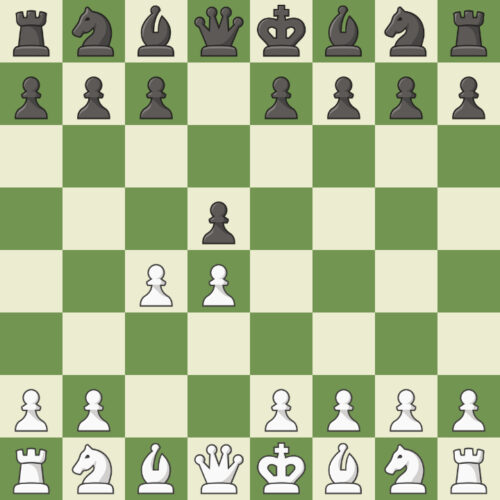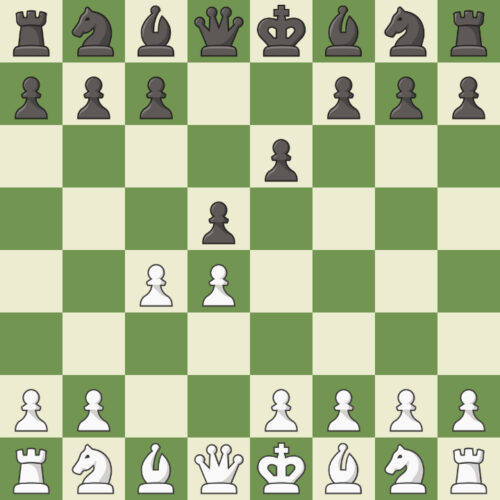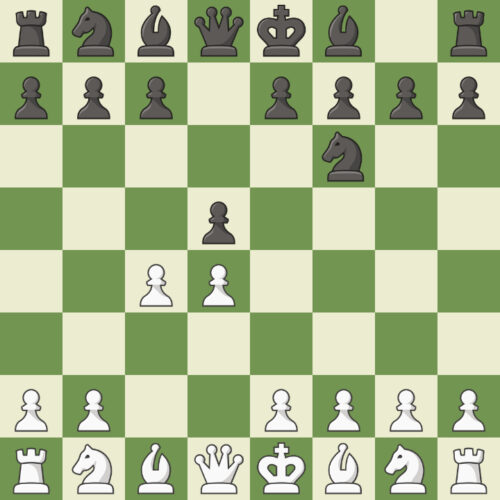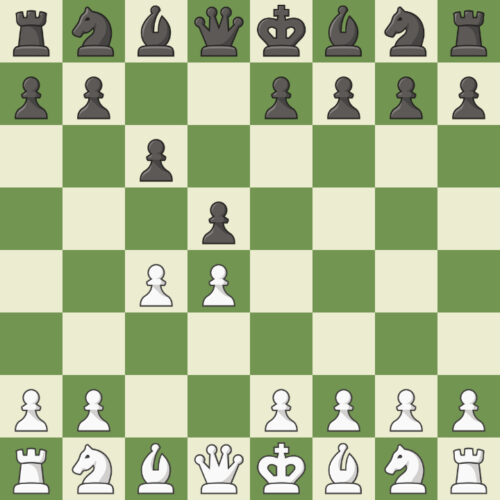The Queen’s Gambit occupies a special place in chess, known for both its historical significance and its psychological edge. It’s a move that immediately poses a question to your opponent: ‘How bold are you feeling today?’ So is it better to accept it or decline it?
Is it Better to Accept or Decline Queen’s Gambit?
If you like an aggressive style of play, accepting the gambit can work well for you. If you play a more straightforward, methodical game, declining could play to your strengths. It’s all about your comfort level and preferred style of play.
Introduced during the 15th century, the Queen’s Gambit has been a favorite among chess enthusiasts for centuries. It’s shown up in the playbooks of grandmasters and brand new chess players are adding it every day.
Here’s the psychology of the Queen’s Gambit: it forces an early decision right away that can dictate momentum. For both players, it’s a test of strategy and who’s feeling ‘alpha’ today.
Now, if my experience playing chess has taught me anything, it’s that accepting or declining the Queen’s Gambit is 100% a personal call. It hinges on your style, experience, and your vibe that day.
That’s what makes this such a fascinating topic to talk about. Let’s explore the accepting or declining of the Queen’s gambit and the effect that one early action has on how the game unfolds.
The Gambit: An Invitation to Accept or Deny
So here’s what the Queen’s Gambit looks like on the chessboard. White opens with d4, Black plays d5, and then the gambit is made: White plays the c4 sacrifice. Does black take it, or leave it?

When Should You Accept the Queen’s Gambit?
So, you’ve decided to take the pawn and accept the Queen’s Gambit. What comes next? Let’s break down the main lines and see what you’re in for. By accepting, you agree to a battle of pawn structure and piece activity that demands precise play.
The risks of accepting the Queen’s Gambit aren’t trivial. You gain material, but you give your opponent strong center control and active piece play while sacrificing your pawn structure. This can lead to a rapid development of their pieces and early threats.
But, with careful play the rewards can be significant. You can turn your extra pawn into an endgame advantage. Not everyone is comfortable surrendering central control, but watch the video below and you’ll start seeing the trade-off as very appealing.
This is a spectacular video showing the destruction of the Queen’s Gambit by accepting for Black.
When Should You Decline the Queen’s Gambit?
If you’re much more comfortable with a safer style of play, not wanting to disturb your pawn structure, or let’s face it, maybe you’re just not feeling the vibe that day, or you feel like your opponent is ready with a counter to any aggressive plays you may be thinking of, declining the Queen’s Gambit could be your move.
Let’s explore the declines that have stood the test of time.
The most typical responses are moves like e6, Nf6, or c6, which fortify your position and prepare you to strike back at the center later on. Special side note: each of these moves has its own unique name and gameplay associated with it, proving just how intensely complex this beautiful game of chess is!



Going back through historical games, we find plenty of instances where top-tier players have swerved away from the gambit’s acceptance, leading to long, strategic fights.
Some of the most durable defenses have been named after the legends who crafted them, such as the Slav and the Nimzo-Indian defenses.
Chess experts agree that your playing style plays a big role when choosing to decline. If you naturally lean towards a more conservative, positionally sound game, then the decline options are right in line with your style of play.
What if your opponent was purposefully trying to get you off your game by making you change styles? Don’t overthink things, just go with what you’re good at.
Now, remember that declining the Queen’s Gambit doesn’t automatically grant you a winning position. You still need to play the whole rest of the game with precision, without blunders, and be ready to adapt.
Tactical awareness never ends in chess. The second you become complacent your opponent instantly gains the advantage.
What Do the Masses Say? Accept or Decline?
“Should I accept or decline the Queen’s Gambit?” is a question that can’t be answered without considering the style and level of your play.
If you love control and working from a solid foundation, declining will sync better with your approach. If taking risks and playing aggressively doesn’t phase you, accepting could lead to an exciting, dynamic game.
See it for yourself in the chess forums: there’s no one-size-fits-all answer. The direction you choose is all about your style and skill.
Now, if you want my opinion, based on my experience, get out there and try both sides! This is how you find your wheelhouse! Accept every Queen’s Gambit for a while. See how you adapt and learn from the counters your opponent gives. You’ll start to find your way and even if you’re a conservative player you may just find your new strength.
Then, just as quickly as you went to accept the gambits, decline them. Go on a run where you try to perfect your methodical approach and work on your pawn structure response.
Once you’ve done both for awhile, take inventory of what you like. You’ll soon get to a point where there’s no thought behind it. You’ll automatically lean to one or the other, not based on what if’s, but based on your own experience.
That’s the name of the game!
Final Thoughts
Feeling aggressive? Accept the Queen’s Gambit? Want to keep the game on more traditional lines? Decline it. It’s all about your vibe and your style of play!
What do you think? How do you normally respond to the Queen’s Gambit? Are you an aggressive accepter? Or a straightforward decliner? Let me know in the comments section below! I’d love to hear your perspective and I always reply!



Playing chess with my son has always been enjoyable, though mastering the art of strategy has often felt elusive. However, after reading your clear and concise explanation of the Queen’s Gambit, I feel empowered like never before!
Thank you immensely for breaking down such a complex concept into easily digestible nuggets of wisdom. I’m eager to put this newfound knowledge into practice, and I can’t wait to challenge my son with it!
I was originally attracted to this article strictly by the head photo!
I love the images too! 🙂 I hope the site and the content helps you get a better understanding of the game. I love it! Play it every day! Thanks for the comment!
Eric,
I am an avid but not professional chess player, I am always looking for new tips and tricks. I sure did not know the name of this strategic offering as the Queen’s Gambit until I came across your article.
My brother, who is borderline a professional chess player, beats the tar out of me almost every time we play. I now have a few new moves to try out when he makes this offer again. Thank you so much not only for this article but your whole site! I have this bookmarked, you have several articles I need to read.
How long have you been a chess fan? I have played pretty much my whole life, I am just not very good at it lol. I think the anticipation that builds up makes me get erratic lol.
Stacie
I’ve been playing since I was a kid. I think I was fascinated with the pieces and how they moved, but only recently have I gotten to the point that I play several games a day every day online. Keep up the practice! Glad you enjoyed the article!